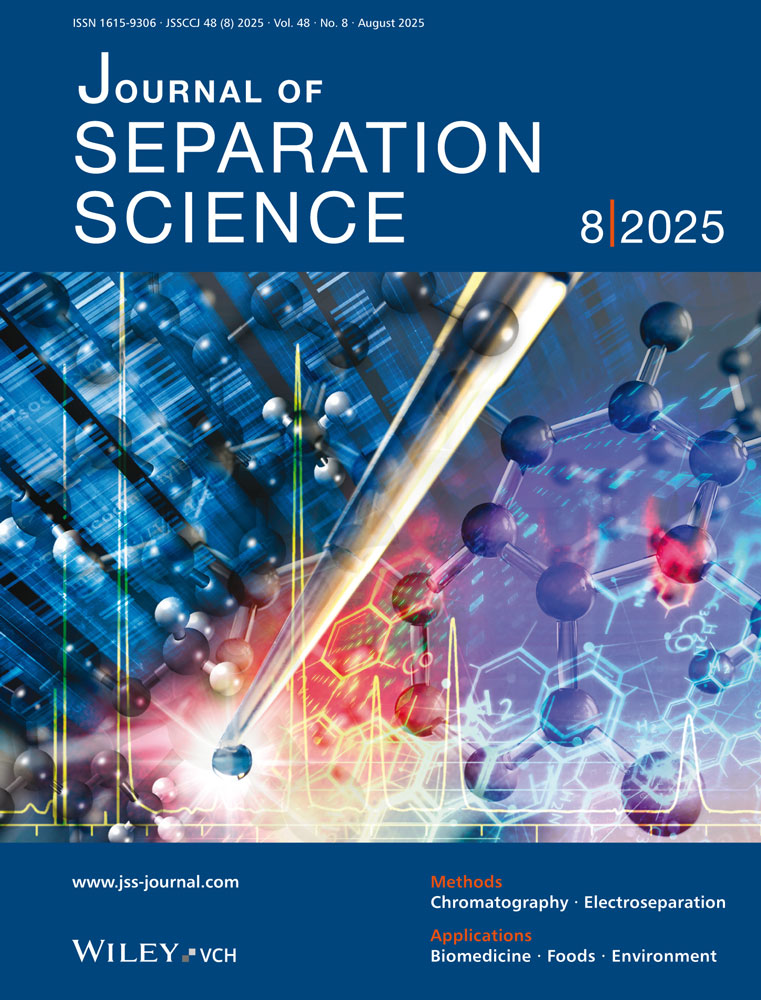Extending the scope of enantiomer separation on diluted methylated β-cyclodextrin derivatives by high-resolution gas chromatography
Abstract
High-resolution open-tubular columns coated with solutions of heptakis(2,3,6-tri-O-methyl)-β-cyclodextrin (Phase I) or heptakis(2,6-di-O-methyl-3-O-trifluoroacetyl)-β-cyclodextrin (Phase II) in moderately polar polysiloxanes such as OV-1701 (5% cyanopropyl/7% phenyl/88% methylpolysiloxane) and OV-225 (25% cyanopropyl/50% phenyl/25% methylpolysiloxane) are used for the gas chromatographic enantiomer separation of volatiles belonging to different classes of compounds. No derivatization procedures are necessary for most of the resolved chiral molecules. The chiral stationary phases can be operated between 25 and 190°C for extended periods of time. The enantiomer separation of saturated, unfunctionalized hydrocarbons clearly demonstrates the importance of molecular inclusion in chiral recognition using cyclodextrins for this class of compounds. The different, and in some cases complementary, selectivity of the Phases I and II is demonstrated.




